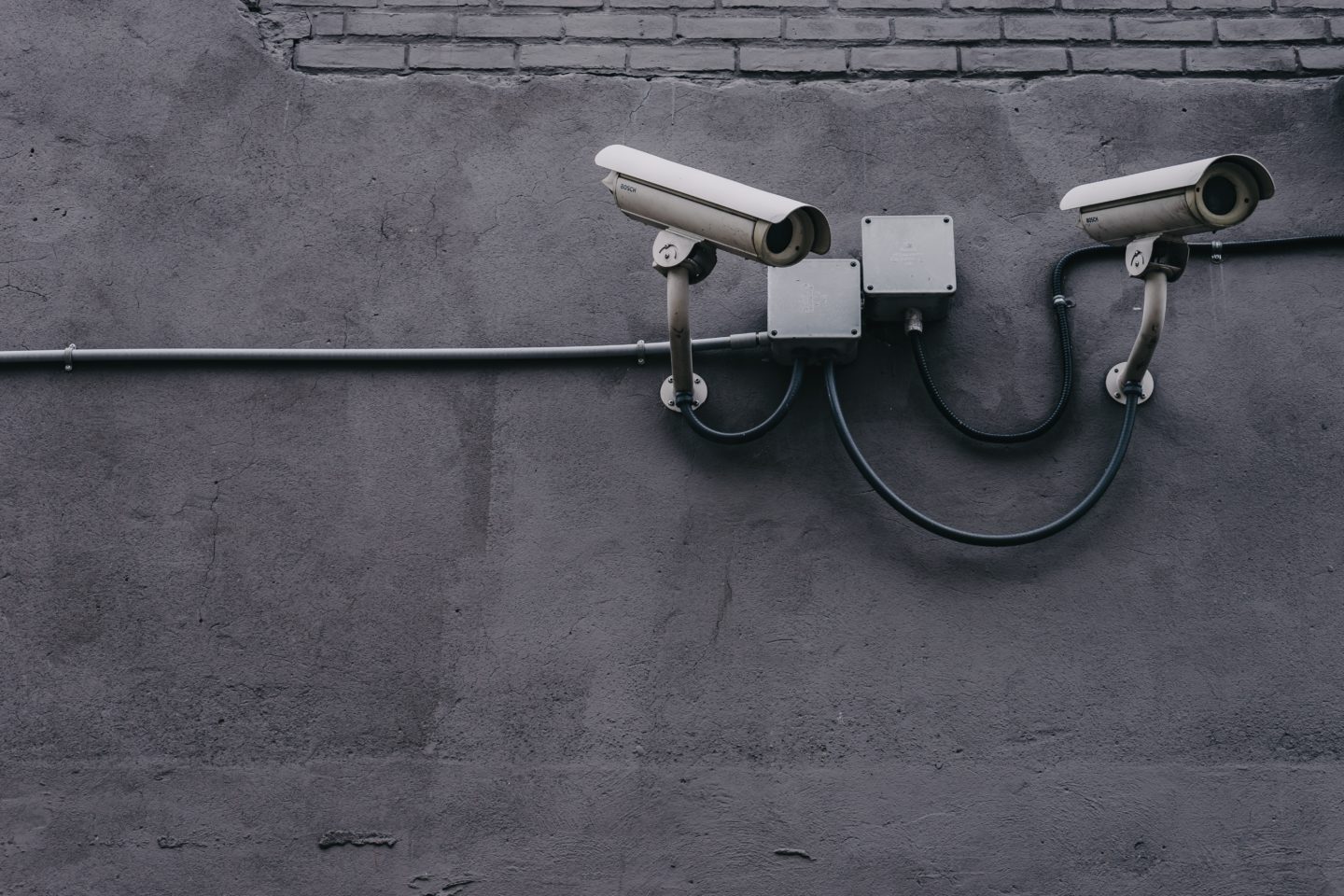
Why leaders should learn to value the boundary spanners
Entrepreneurial talent who work with other teams often run into trouble with their managers. Here are ways to get the most out of your ‘boundary spanners’...
Audio available

by Jerry Davis Published October 24, 2022 in Magazine • 6 min read • 
When the pandemic shuttered workplaces around the world and sent millions to work from home, some of us imagined a faint silver lining: at least the boss would not be wandering the floor and looking over our shoulder. Perhaps at home we could get our work done in peace and on our own schedule. But while many more of us now are able to work in our pajamas, at least on some days, workplace surveillance has extended its tentacles into our homes, our cars, and our remote workplaces.
Even non-employee contractors are monitored via surveillance tech on their phones and computers, or on mandatory microphones, cameras, and bracelets. A recent report by Coworker.org offers a compendium of over 500 new technologies created to monitor laborers and their work.
The rapid spread of “bossware” is once again confirming that dystopian fiction is usually the most accurate predictor of how new technologies from Silicon Valley will be implemented. But it also gives us an opportunity to re-imagine how information technologies are implemented “at work”.
Using electronic technologies to monitor workers is nothing new. Financial institutions have long been in the vanguard of surveilling employees and their communications. That makes sense: these companies are subject to stringent compliance regulations and must be hyper-vigilant in protecting their clients from fraud and other financial shenanigans. Much of this technology simply entailed scanning employee emails and other communications for suspicious words and phrases, or irregular communications with those outside their departments that might signal something untoward.
Peter Thiel’s data-mining company Palantir was an early contributor. In 2009 JP Morgan Chase engaged Palantir to track internal communications for suspicious activity. According to Bloomberg, the group “vacuumed up emails and browser histories, GPS locations from company-issued smartphones, printer and download activity, and transcripts of digitally recorded phone conversations. Palantir’s software aggregated, searched, sorted, and analyzed these records, surfacing keywords and patterns of behavior that [were] flagged for potential abuse of corporate assets”. Social network analysis allowed the firm to zero in on suspects.
Contract lawyers scanning documents from home are tracked by AI-based facial recognition software to see if they are paying attention, or if an unauthorized person (or cat) has entered the room
As technology advanced, so did the reach of surveillance methods. The current monitoring tech at JPMorgan, WADU (Workplace Activity Data Utility), also adds in calendar entries, badge swipes to enter offices, time spent on Zoom and other apps, and more. Employees were not universally delighted by this system. Of course, once such tools are built to monitor communications in an industry with strict compliance standards, they can be adapted and imitated widely.
And what counts as suspicious behavior will vary by employers: what looks like a conspiracy to the compliance department at a bank might look like a union-organizing effort to a retailer or coffee chain. (Note to HR: under US law, communications around labor organizing are protected.)
Workplace surveillance is not just for office workers. Amazon warehouses are famous for their productivity tracking applications, which can automate the firing process for laborers who don’t make their quota: According to the technology website The Verge, “Amazon’s system tracks the rates of each individual associate’s productivity … and automatically generates any warnings or terminations regarding quality or productivity without input from supervisors”. This relentless “culture of surveillance” is one of the reasons given for the unionization push at Amazon warehouses. The tech giant is also seeking to automate other aspects of supervision, for example, through a wristband that guides warehouse packers’ hand movements through vibrations.
The massive impromptu shift to work-from-home created a dilemma for corporate employers accustomed to monitoring and managing labor in person. But surveillance technologies have expanded to meet the moment, turning the world into a panopticon enabled by GPS, cameras, smartphones, and the Internet. Amazon delivery drivers endure AI-enabled cameras that monitor their movements and facial expressions as well as traffic outside the vehicle. “A car cuts me off to move into my lane, and the camera, in this really dystopian dark, robotic voice, shouts at me,” said one driver, quoted by the website Business Insider. Home care workers are tracked by electronic visit verification apps on their mobile phones. The glitch-prone software is charged with regularly shorting the hours of low-paid essential workers as it monitors their movements from client to client.
Many jobs mostly entail staring at a screen and typing on a keyboard or talking to people, either of which can be done from almost anywhere. Surveillance software vendors are rising to the challenge. Contract lawyers scanning documents from home are tracked by AI-based facial recognition software to see if they are paying attention, or if an unauthorized person (or cat) has entered the room, or if they might be using their phone to take a picture of what’s onscreen. Any of these events might get them kicked off the system, requiring an elaborate procedure to log in again – or perhaps the loss of employment.
Similar technology is used to monitor students taking college admissions exams from home, where a stray glance or a trip to the restroom may be enough to be ejected from the high-stakes test. Once admitted, there is more of the same: 17 medical students at Dartmouth were accused of cheating on remote exams, evidently because background updates in their college’s learning management system were flagged as unauthorized use of materials. (The charges were dropped.) And colleges’ efforts to track student movements on campus during the pandemic quickly turned Orwellian: one Michigan college sought to require students to tape a “bio-button” to their chest to be sure they were social-distancing appropriately. History shows that once implemented and accepted (more or less), these technologies are not rolled back.
The pandemic uncovered just how much work could be done from remote locations without an in-person boss. Many of us fear that the spread of “algorithmic management” will lead to a large-scale shift to the use of contractors at the expense of employees. Rana Foroohar reported the comment of an American CEO at this year’s Davos meeting: “If you can do it in Tahoe, you can do it in India.” Remote contract workers can have all the paranoid surveillance of an on-site employee with none of the security or protections, spending their off-hours scouting for mouse-jigglers and other countermeasures to the corporate Stasi.
But there is an alternative. Research finds that “transparency” that flows in only one direction has many costs, both to the mental health of workers and to workplace innovation. Why don’t we use this tech-driven moment of reckoning to enable open-book management and more democracy at work? After all, the same phone that can be used to track a worker’s every movement can also be used to enable those workers to receive information, engage in reasoned dialogue, and exercise voice. Transparency can flow in both directions. The transaction costs of democracy have declined dramatically – we could be using apps like Loomio to turn workplaces into democracies, rather than echoing the authoritarian tendencies spreading through the political world.

Professor of Business Administration and Professor of Sociology, University of Michigan’s Ross School of Business
Jerry Davis is the Gilbert and Ruth Whitaker Professor of Business Administration and Professor of Sociology at the University of Michigan’s Ross School of Business. He has published widely on management, sociology, and finance. His latest book is Taming Corporate Power in the 21st Century (Cambridge University Press, 2022), part of Cambridge Elements Series on Reinventing Capitalism.

July 3, 2025 • by Eric Quintane in Audio articles
Entrepreneurial talent who work with other teams often run into trouble with their managers. Here are ways to get the most out of your ‘boundary spanners’...
 Audio available
Audio available
June 24, 2025 • by Jerry Davis in Audio articles
The tech broligarchs have invested heavily in Donald Trump but are not getting the payback they bargained for. Do big business and the markets still shape US government policy, or is the...
 Audio available
Audio available
June 19, 2025 • by David Bach, Richard Baldwin, Simon J. Evenett in Audio articles
As governments lock horns in our increasingly multipolar world, long-held assumptions are being upended. Forward-looking executives realize the next phase of globalization necessitates novel approaches....
 Audio available
Audio available
June 2, 2025 • by George Kohlrieser in Audio articles
Leadership Honesty and courage: building on the cornerstones of trust by George Kohlrieser Published 17 April 2025 in Leadership • 5 min read DownloadSave Trust is the bedrock of effective leadership. It...
 Audio available
Audio availableExplore first person business intelligence from top minds curated for a global executive audience